
The Long Sword dance is a hilt-and-point sword dance recorded mainly in Yorkshire, England. The dances are usually performed around Christmas time and were believed to derive from a rite performed to enable a fruitful harvest.

The Long Sword dance is a hilt-and-point sword dance recorded mainly in Yorkshire, England. The dances are usually performed around Christmas time and were believed to derive from a rite performed to enable a fruitful harvest.
The Morris Ring refer to the dance tradition as 'longsword' [1] as do EFDSS. [2] However the Goathland Plough Stots website states that "The Goathland Plough Stots is one of Yorkshires traditional long sword teams, if not the oldest still dancing their own dance as performed as far back as the early 19th century". [3]
The Long Sword dance is related to the rapper sword dance of Northumbria, but the character is fundamentally different as it uses rigid metal or wooden swords, rather than the flexible spring steel rappers used by its northern relation. [4]
Cecil Sharp and other 20th Century folklorists believed that the dances originated from a religious or magical ceremony that was performed around Plough Monday to promote fertile soil; [5] later researchers have cast doubt on such findings. [6] They were banned under Oliver Cromwell, but revived when the monarchy was restored under Charles II. [7]
Long Sword dances are most commonly found in Yorkshire and the southern part of County Durham [8] , with particular concentrations of dances in East Cleveland, the northern part of the North York Moors and around Sheffield. [9] Outliers were also recorded in the East Midlands and elsewhere in Northeastern England. [10]
Long Sword dances vary in the way they are performed, with some being slow and militaristic, [11] such as the Grenoside or performed with pace and speed like Handsworth dances from near Sheffield. Others have different features including variations of numbers of dancers and distinctive movements. [12]
Unlike many traditional dances in England, which are mainly performed by revival teams, Long Sword dances are often still performed by their own village teams, such as Grenoside Sword Dancers, [4] the Goathland Plough Stots [11] and Flamborough Sword Dancers. [13] These teams generally maintain the traditions of their dances, such as traditional performances on Boxing Day or Plough Monday. [14]
In addition to performances by traditional longsword teams in their own location longsword teams also appear at folk festivals such as the Sidmouth Folk Festival and the Beverley Folk Festival.
Dedicated longsword festivals have also been held in the UK. The International Sword Spectacular took place in Whitby, England, in May 2004 and was held again in York in May 2008. [15]
Some photographs of Grenoside Sword Dancers performing the Grenoside Sword dance on Boxing Day, the traditional day the dance is performed. [16]
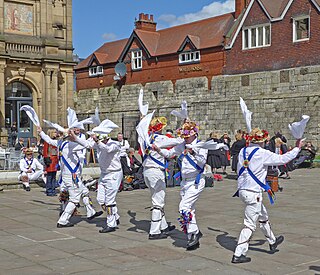
Morris dancing is a form of English folk dance. It is based on rhythmic stepping and the execution of choreographed figures by a group of dancers in costume, usually wearing bell pads on their shins and/or shoes. A band or single musician, also costumed, will accompany them. Sticks, swords, handkerchiefs, and a variety of other implements may be wielded by the dancers.

Molly dancing is a form of English Morris dance, traditionally done by out-of-work ploughboys in midwinter in the 19th century.

The Abbots Bromley Horn Dance is a folk dance which takes place each September in the village of Abbots Bromley in Staffordshire, England. It is performed by ten dancers, accompanied by a musician playing an accordion and a youth with a triangle. Six of the dancers carry reindeer horns; the remaining four are a hobby horse, Maid Marian, a fool, and a youth with a bow and arrow. On Wakes Monday, beginning early in the morning at the parish church where the horns are stored, the performers dance around the parish all day.
The folk music of England is a tradition-based music which has existed since the later medieval period. It is often contrasted with courtly, classical and later commercial music. Folk music traditionally was preserved and passed on orally within communities, but print and subsequently audio recordings have since become the primary means of transmission. The term is used to refer both to English traditional music and music composed or delivered in a traditional style.

Weapon dances incorporating swords or similar weapons are recorded throughout world history. There are various traditions of solo and mock-battle (Pyrrhic) sword dances from Africa, Asia and Europe. Some traditions use sticks or clubs in place of bladed weapons, while most modern performers employ dulled replications to avoid injury.

Rapper sword is a variation of sword dance unique to Northumberland and County Durham. It emerged from the pit villages of Tyneside and Wearside, where miners first performed the tradition.
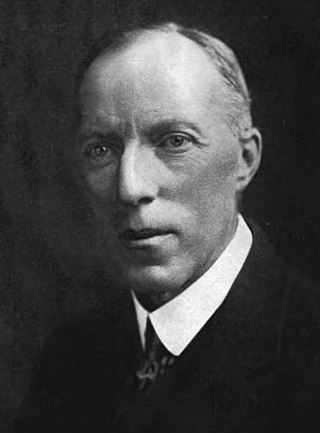
Cecil James Sharp was an English collector of folk songs, folk dances and instrumental music, as well as a lecturer, teacher, composer and musician. He was a key figure in the folk-song revival in England during the Edwardian period. According to Roud's Folk Song in England, Sharp was the country's "single most important figure in the study of folk song and music."

Handsworth is a suburb of south eastern Sheffield, in South Yorkshire, England. It covers an area of approximately 5 square miles (13 km2), and has a population of approximately 9,957. It has five schools, four churches, a variety of small shops, a large supermarket, and a range of commercial and light industrial businesses. Until 1974 it was in the West Riding of Yorkshire.

Eliza Amy Forbes Carthy, MBE is an English folk musician known for both singing and playing the fiddle. She is the daughter of English folk musicians Martin Carthy and Norma Waterson.
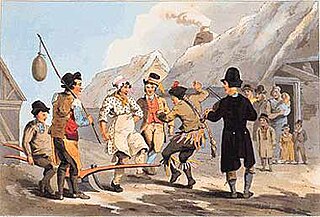
Plough Monday is the traditional start of the English agricultural year. While local practices may vary, Plough Monday is generally the first Monday after Epiphany, 6 January. References to Plough Monday date back to the late 15th century. The day before Plough Monday is referred to as Plough Sunday, in which a ploughshare is brought into the local Christian church with prayers for the blessing of human labour, tools, as well as the land.

The New England Folk Festival is an annual weekend festival of traditional dance and music. It takes place in the Boston, Massachusetts region each spring. It is conducted by the New England Folk Festival Association. Both the festival and the association are colloquially known by the abbreviation NEFFA. NEFFA is a participatory festival; attendees are encouraged to participate in dancing, singing, musical jam sessions, and other activities. It is run by volunteers and all the performers are volunteers as well.
The Dancing England Rapper Tournament (DERT) is a continuation of the most significant rapper sword dance competitions that were held in Newcastle upon Tyne, England, the centre of the coalfields where the dance originated. The modern annual weekend event, held at different venues in the UK, brings together rapper teams and sword dancers from around the country and occasionally abroad.
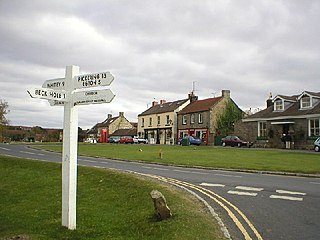
Goathland is a village and civil parish in the Scarborough district of North Yorkshire, England. Historically part of the North Riding of Yorkshire, it is in the North York Moors national park due north of Pickering, off the A169 to Whitby. It has a station on the steam-operated North Yorkshire Moors Railway line.

Clog dancing is a form of step dance characterised by the wearing of inflexible, wooden soled clogs. Clog dancing developed into differing intricate forms both in Wales and also in the North of England. Welsh clog dancing mainly originates from various slate mines where workers would compete against each other during work breaks. Northern English traditional clog dancing originates from Lancashire, Yorkshire, County Durham, Northumberland and the Lake District.

Grenoside is a suburb of Sheffield, South Yorkshire, England. The suburb falls within the West Ecclesfield ward of the city.
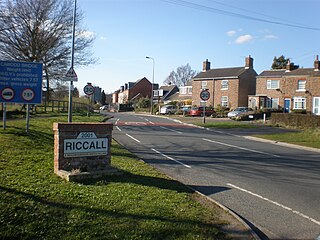
Riccall is a village and civil parish in North Yorkshire, England, lying 3.5 miles (6 km) to the north of Selby and 9 miles (14 km) south of York. Riccall is noted for being the place where Harold Hardrada's force of invaders landed in 1066, just before the Battle of Stamford Bridge. In the Second World War, an RAF base was built north of the village, and between the late 1970s and the early 2000s, coal was mined from beneath the village as Riccall Mine, part of the Selby Coalfield.

A Mighty River of Song was a unique concert performance by various members of the Waterson family on 12 May 2007 at the Royal Albert Hall in the South Kensington area of London, England.
Dancing England was a series of showcase traditional dance concerts held at the Derby Assembly Rooms from 1979 to 1987. They were devised and curated by Phil Heaton and John Shaw, members of the Black Cap Sword Dancers, and two very notable characters on the Nottingham and Derby folk and dance scene of the 1970s. Dancing England was set up to showcase the best of traditional dance in the UK, along with unique and/or interesting folk customs to celebrate the UK's wide cultural heritage.
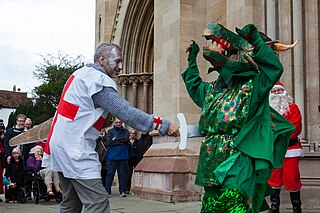
Mummers' plays are folk plays performed by troupes of amateur actors, traditionally all male, known as mummers or guisers. Historically, mummers' plays consisted of informal groups of costumed community members that visited from house to house on various holidays. Today the term refers especially to a play in which a number of characters are called on stage, two of whom engage in a combat, the loser being revived by a doctor character. This play is sometimes found associated with a sword dance though both also exist in Britain independently.
The Goathland Plough Stots are a team of Long Sword Dancers based in the village of Goathland, North Yorkshire, England. The traditional dance that they perform had died out by the start of the twentieth century but was revived in 1922. The team were expelled from the Morris Ring for allowing women to be trained in the art of the dance, the tradition being that it is a male-only dance. The Goathland Plough Stots dance is recognised as one of the oldest in England, with a history dating back more than a thousand years.